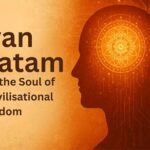
The 500-year timeframe refers to the period between the construction of a Babri structure on the disputed site in Ayodhya and the recent construction of a Ram temple, at His birthplace. It’s important to remember that this is a complex and sensitive topic, and there are different perspectives on the historical timeline and events.
Here’s a brief overview:
- 16th century: The Babri structure was built by the Mughal emperor Babur on a site traditionally worshiped by Hindus to be the birthplace of Lord Rama, a central figure in the Hindu epic Ramayana.
- 19th century: The first recorded dispute over the site emerged in the 1850s. Tensions simmered for decades, with occasional flare-ups.
- 1949: Idols of Lord Rama appeared inside the Babri structure, triggering further conflict.
- 1980s-2000s: The decades that followed saw legal battles, political mobilization, and episodes of violence, culminating in the demolition of the Babri structure by Hindu kar sevaks (volunteers) in 1992. This event triggered widespread communal riots across India.
- 2010s: The legal dispute continued for years, until the Supreme Court of India in 2019 ruled in favor of the Hindu parties, awarding the disputed land for the construction of a Ram temple.
Therefore, the 500-year timeframe signifies the long and contested history associated with the site in Ayodhya, culminating in the recent construction of the Ram temple. It’s important to note that this is a simplified explanation, and there are various interpretations and perspectives on the historical events and their significance.
It’s also important to acknowledge that the construction of the Ram temple is a significant event for many Hindus, holding immense religious and cultural importance. However, it’s also crucial to recognize the sensitivities surrounding the issue and the impact it has had on Muslim communities.
I hope this provides a helpful overview.
Here are the key points of the Supreme Court verdict on the Ayodhya dispute:
Land Ownership:
- Hindu Ownership: The Court ruled that the disputed land belonged to the deity Ram Lalla Virajman, represented by the Hindu Mahasabha. This was based on archaeological evidence suggesting the existence of a temple beneath the Babri Masjid, and on the faith and belief of Hindus who consider the site to be the birthplace of Lord Rama.Opens in a new windowtimescontent.timesgroup.comRam Lalla Virajman
- Muslim Claim Rejected: The Court rejected the claim of the Sunni Waqf Board, which argued that the Babri Masjid was built on vacant land and belonged to them.
Land Allocation:
- Ram Temple: The Court ordered the disputed land, measuring 2.77 acres, to be handed over to a trust formed by the Government of India for the construction of a Ram temple.
- Mosque: The Court directed the Government of India to allot 5 acres of land in a prominent location in Ayodhya to the Sunni Waqf Board for the construction of a mosque.
Other Key Points:
- Unanimous Verdict: The verdict was delivered by a five-judge bench and was unanimous.
- Peaceful Resolution: The verdict was hailed as a historic win for both Hindus and Muslims, as it brought a peaceful end to a centuries-old dispute that had been a source of tension and violence.
- Constitutional Values Upheld: The Court emphasized that the decision was based on constitutional principles, including secularism and the rule of law.
- Challenges and Reconciliations: Despite the peaceful resolution, some challenges remain in terms of implementing the verdict and ensuring social harmony. There are ongoing discussions and efforts to ensure that the construction of both the Ram temple and the mosque are done in a way that respects the sensitivities of both communities.
It’s important to note that the Ayodhya dispute is a complex issue with a long history, and there are different perspectives on the events and the verdict. This summary provides a brief overview of the key points of the Supreme Court decision.
Judgement PDF (official) : https://www.sci.gov.in/pdf/JUD_2.pdf
Editor @ Masterkeys.in



